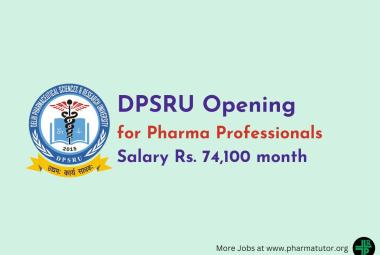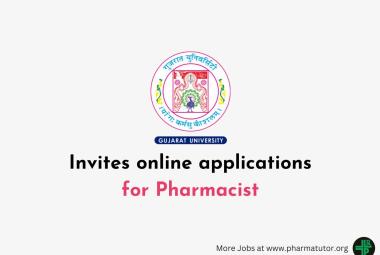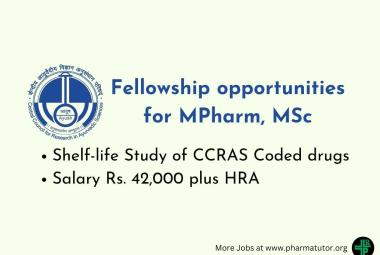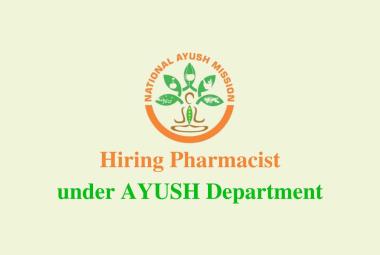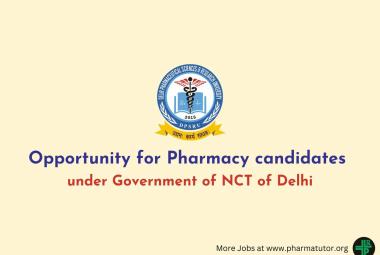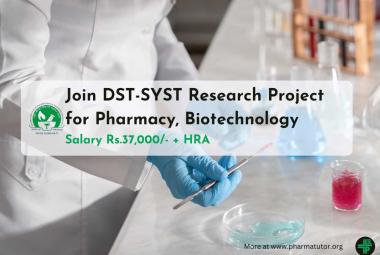AUTHORS :
Girjesh Vishwakarma*, Dr.Surendra Kumar Jain
Sagar Institute of Research & Technology - Pharmacy
Opp. Sagar Estate, Ayodhya By Pass Road, Bhopal - 462 041 (MP)
Gv1448@gmail.com
ABSTRACT :
Now a day’s usage of drugs has been increasing day by day and pharmaceutical companies are developing new drug products and humans begin taking more and effective drugs also as investigational drugs. Safety and efficacy are the two major predominant considerations about any drug. In each and each phase of a products life cycle pharmacovigilance plays a critical role. Thus, significance of pharmacovigilance is developing and have become vital and inseparable a part of clinical research.
INTRODUCTION
Pharmacovigilance is majorly referred to as drug safety. it's a main integral a part of clinical research. Throughout the merchandise life cycle clinical trials safety and post marketing pharmacovigilance plays a critical role [1-3]. The word pharmacovigilance springs from two words one Parmakon may be a Greek word which suggests “drug” and another vigilare may be a Latin word which suggests to stay awake or to stay watch.” Pharmacovigilance is “defined because the pharmacological science concerning the detection, understanding, assessment and prevention of adverse effects, particularly future and short term adverse effects of medicines” [4-8].
According to WHO Pharmacovigilance (PV) is that the pharmacological science relating to the detection, evaluation, understanding and prevention of adverse effects, especially long term and short term side effects of medicines [9].
Aim of Pharmacovigilance
Figure No. 1:- Aim of Pharmacovigilance
Objective of pharmacovigilance
High index of ADRs are to be successfully diagnosed by clinicians, it's the high level of awareness about the drugs getting used. Pharmacovigilance, unify all the knowledge altogether aspects of benefit-risk ratio of medicine during a population [10-13]. Events that occur when a specific drug is run are recorded within the patient’s notes by drug monitoring then an adverse reaction of the drug and therefore the activity of the drug being monitored; these studies aim to detect ADR of medicine.
Reporting of ADRs after marketing must be actively encouraged and will involve all those concerned including doctors, pharmacists, nurses, patients and pharmaceutical companies. To develop and enhance this, a culture of learning about pharmacovigilance for health care students must be started in their early professional carrier [14-16]. This may help healthcare professionals to know and also create awareness by giving adequate information to patients at their initial phase of treatment about the potential benefits and risks of the therapy [17-20].
In the process of development of a replacement pharmaceutical drug, there are many stages they're preclinical trials, then clinical trials this includes four phases. during this the primary three phase’s helps within the determination of safety, efficacy and side effects of the developed drug product respectively, whereas just in case of fourth phase post marketing studies are administered for determining safety in patients. Thus post marketing surveillance helps in uplifting the knowledge of pharmacovigilance [21-23].
Post Marketing Surveillance Pharmaceutical drug or medical device is monitored often after it has been released in to the market, Since drugs are approved based of clinical trials which involve relatively small number of people who do not have any other medical complications, post marketing surveillance play an important role to know the ADRs of drugs after they have released in to the market. [24-27]
Figure No. 3:- Post-market surveillance strategy
Spontaneous ADR Reporting
It is necessary to report ADRs to Pharmacovigilance department by doctors, health care professionals, they are provided with forms where they can notify the suspected ADRs they detect, these forms are greatly available to health care professionals to encourage the reporting, and it helps in spontaneous reporting for all the drugs, it is affordable method of detecting rare ADRs. This spontaneous reporting helps to identify many unexpected ADRs, it helps in withdrawal of many marketed drugs, and information being provided which guide safer use of the product [28-30].
ADRs which occurred by particular drugs should be analyzed and reported, Pharmaceutical manufacturers have to communicate with the doctors at the clinical level regarding the ADRs by.
• Changing Medication formula if necessary
• Implementing new prescribing procedures
• Implementing new dispensing procedures
• Educating the professional staff
• Educating the professional staff
Prescription Event Monitoring
It involves health professionals submitting all the clinical events reported by the patient to the prescribed new drug. This method mainly focuses on studying the safety of new medications that are used by general practitioners in this method. In this method patients being prescribed by drugs are monitored.
Figure No. 4 :- Frame work of Pharmacovigilance
Electronic Health Records
It is a computer stored collection of health information, about one person linked by a person identifier; it represents the basis for healthcare Information system development.
Conclusion
Pharmacovigilance gives information to assess the security profile of a drug; the success of pharmacovigilance is essentially hooked in to the participation of execs of health care countrywide to report ADRs/AEs, Current progress in Pharmacovigilance is marked by increase in use of databases to form the method more proactive and arranged. It must be in everyone’s interest to develop safe and effective medicines to patients.
REFERENCES
1. De Carvalho PM et al.Brazilian Regulation in Pharmacovigilance: A Review. PharmaceutReg Affairs.2016;5:164.
2. World Health Organization (WHO).The Importance of Pharmacovigilance: Safety Monitoring of Medicinal Products. WHO, Geneva2002.
3. MuhannadRMS, et al. Physicians’ knowledge about pharmacovigilance in Iraq. J Pharmacovigilance.2016;4:214.
4. GildeevaGN and Yurkov VI. Pharmacovigilance in Russia: Challenges, Prospects and Current State of Affairs. J Pharmacovigil. 2016;4:206.
5. Rehan HS, et al. Physician's guide to pharmacovigilance: terminology and causality assessment.Eur J Intern Med. 2009;20:3-8.
6. Saygi S, et al. Pharmacovigilance Awareness among the Community Pharmacists and Pharmacy Students in the Turkish Republic of Northern Cyprus. J Pharmacovigil. 2016;4:204.
7. Rajesh R, et al. An educational intervention to assess knowledge attitude practice of pharmacovigilance among health care professionals in an Indian tertiary care teaching hospital. Int J PharmTech Res. 2011;3:678-692.
8. Sanaa A, et al. Awareness and Perception of National Pharmacovigilance Center among Lebanese Medical Staff.J Pharmacovigilance.2016;4:199.
9. KumarD, et al. PharmacovigilanceProgramme in India: Current Status and Its Per- spectives. J PharmacolToxicol Studies. 2014;3:34-36.
10. Raza A and Jamal H. Assessment of Knowledge, Attitudes and Practice among the Medical and Pharmacy Students towards Pharmacovigilance and Adverse Drug Reactions in Abbottabad, Pakistan. J Pharmacovigilance. 2015;3:173.
11. Marisol HSO, et al. Implementation of a Robust Pharmacovigilance Method for Filgrastim Non-Innovator Products in Cancer Patients in Routine Clinical Practice Complying With Mexican Regulations for Biocomparables. J Pharmacovigilance. 2015;3:174.
12. Livio F, et al. Pharmacovigilance. Rev Med Suisse. 2012;8:116-119.
13. Chauhan A and Mittu B. An Outlook to Pharmacovigilance in India. Pharm Anal Acta. 2015;6:e179.
14 Vallano A,et al. Hospital Doctors’ Views and Concerns about Pharmacovigilance. J Pharmacovigilance. 2015;3:160.
15. EChY. Pharmacovigilance for Novel Oral Anticoagulants: Why is It So Crucial?. J Pharmacovigilance. 2015;3:e135.
16. Naik P. The Future of Pharmacovigilance. J Pharmacovigilance. 2015;3:159.
17.Garlapati S andPriyanka S. Cradles of Signals for Pharmacovigilance Process. J Pharmacovigil. 2015;3:e126.
18. Garlapati S andNagandla S. Risk Management Plan Its Importance and Emphasys on Pharmacovigilance Activities. AdvPharmacoepidemiol Drug Saf. 2015;4:e128.
19. Elhassan GO. Pharmacovigilance: Clinical Perspectives towards Patient Safety. J Pharmacovigil. 2015;3:e129.
20. Borg JJ, et al.Strengthening and rationalizing pharmacovigilance in the EU: where is Europe heading to? A review of the new EU legislation on pharmacovigilance. Drug Saf. 2011;34:187-197.
21. De Ponti F. New Approaches in Pharmacovigilance in the Pharmacogenomic Era: A Call for Papers. J Pharmacovigilance. 2014;2:e122.
22. Zhang L,et al.Pharmacovigilance practice and risk control of Traditional Chinese Medicine drugs in China: current status and future perspective. J Ethnopharmacol. 2012;140:519-525.
23. Hamad F and Elnour A. The Role of Clinical Pharmacist in Pharmacovigilance. J Pharmacovigilance. 2014;2:e121.
24. Palaian S, et al. Health professionals' knowledge, attitude and practices towards pharmacovigilance in Nepal. Pharm Pract (Granada). 2011;9:228-235.
25. Agrawal P. Drug Discovery and Development: An Insight into Pharmacovigilance. J Pharmacovigilance. 2014;2:e120.
26. PatilJS. Pharmacovigilance in India. J Pharmacovigilance. 2014;2:e119.
27. Richards NL, et al. Merging Wildlife and Environmental Monitoring Approaches with Forensic Principles: Application of Unconventional and Non-Invasive Sampling in Eco-Pharmacovigilance. J Forensic Res. 2014;5:228.
28. Yongyang X, et al. Quantitative Pharmacovigilance Modeling for TCM Injections Adverse Event Reporting. J Pharmacovigilance. 2014;2:124.
29. EChY. Pharmacovigilance and NSAIDs J Pharmacovigilance. 2014;2:e116.
30. Limuaco OM, et al. The Extent of Pharmacovigilance Awareness among Pharmacy Senior Students ofCentro Escolar University, Manila, Philippines. J Pharmacovigilance. 2014;2:121.
31. Preda A. Pharmacovigilance in the New Millennium: Challenges, Opportunities and New Directions. J Pharmacovigilance. 2013;1:e106.
32. Bencheikh RS andBenabdallah G.Medication errors: pharmacovigilancecentres in detection and prevention. Br J ClinPharmacol. 2009;67:687-690.
33. Mishra H and Kumar V. Pharmacovigilance: Current Scenario in a Tertiary Care Teaching Medical College in North India. J Pharmacovigilance. 2013;1:108.
NOW YOU CAN ALSO PUBLISH YOUR ARTICLE ONLINE.
SUBMIT YOUR ARTICLE/PROJECT AT admin@pharmatutor.org
FIND OUT MORE ARTICLES AT OUR DATABASE



